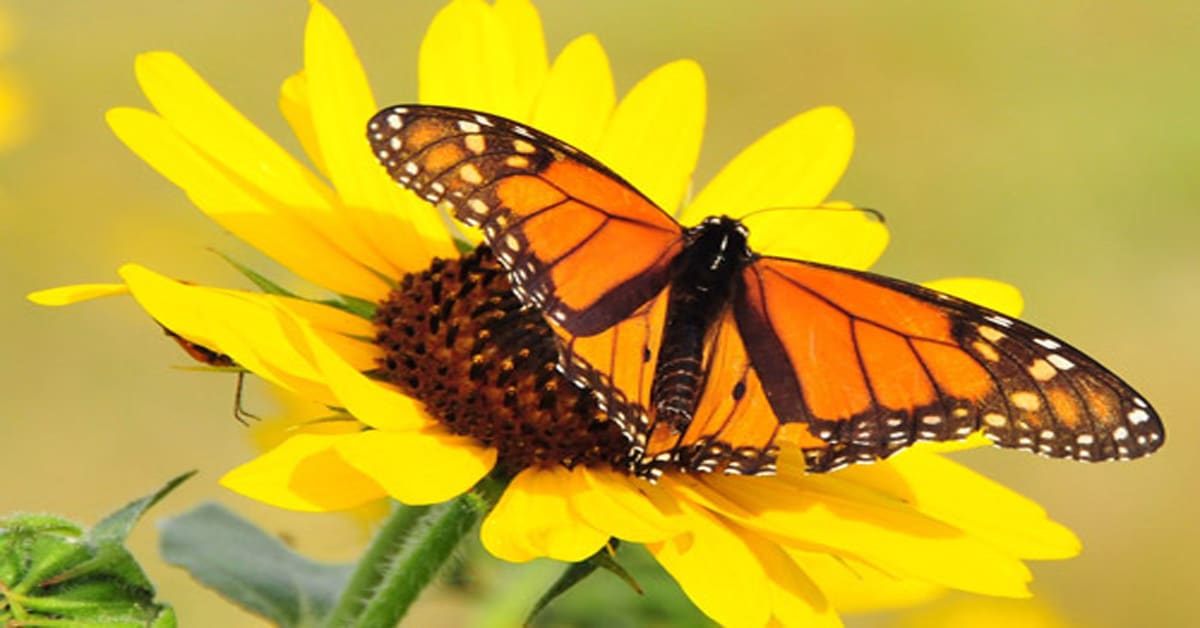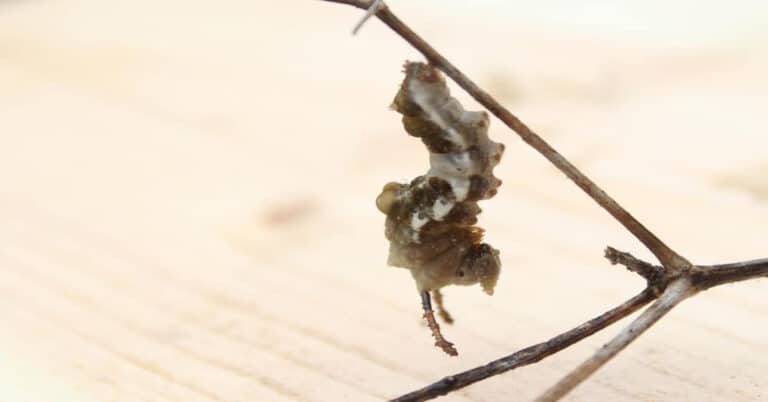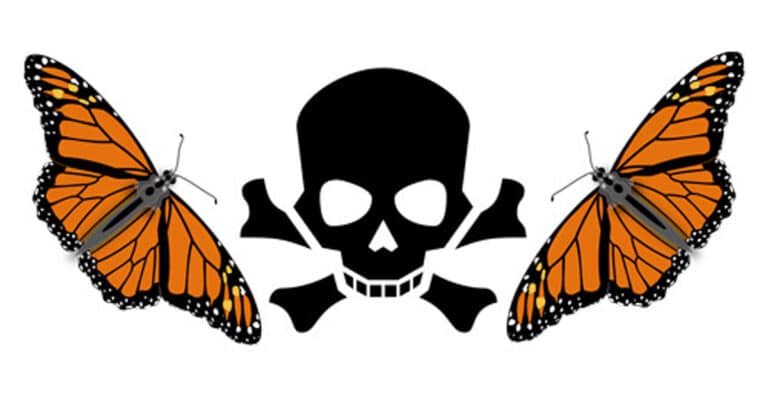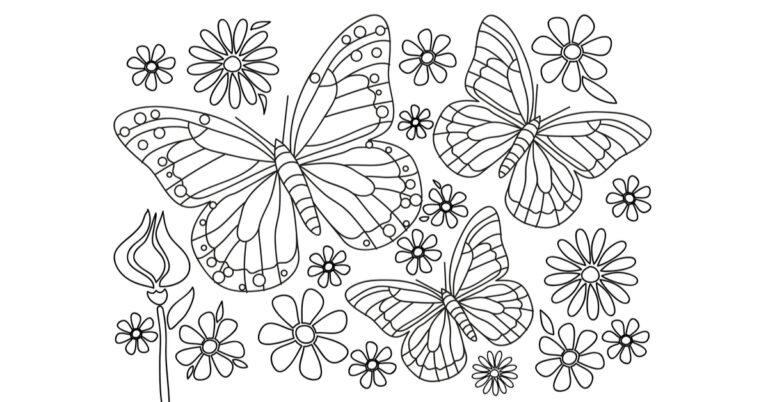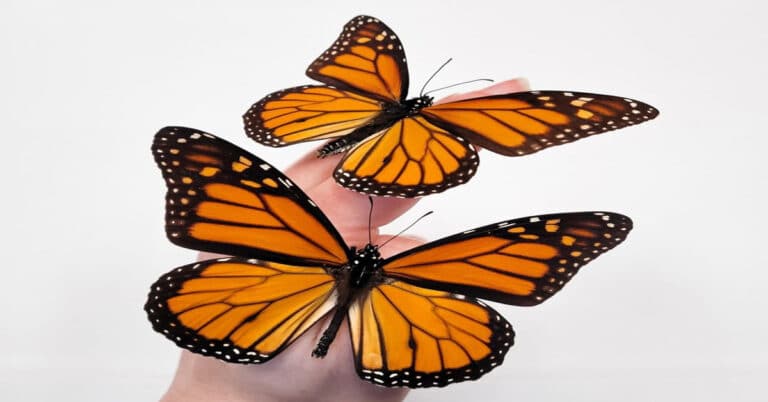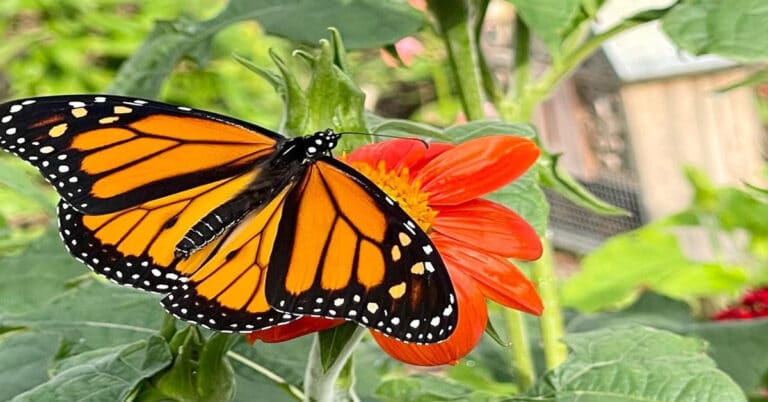How to Grow A Monarch Butterfly
If you live in North America and have a place where native milkweed will grow, you can help Monarch Butterflies grow. All most of us need to do to grow our own Monarchs is to leave the native milkweed plants alone and avoid spraying or otherwise polluting the area. A butterfly will place an egg on a plant and, if all goes well, a healthy wild Monarch Butterfly caterpillar will find all it needs to eat without harming the plant.
Students sometimes rear native butterflies indoors as a science project. Pretty species that can be released to fly away are popular enough that you can actually buy Monarch Butterfly kits. Scientists actually warn us not to raise too many at the same time. Five or ten caterpillars might be considered insurance for a project of rearing one butterfly. More than a hundred would unbalance the local Monarch Butterfly population and might increase the incidence of disease, predators, or genetic weaknesses.
As discussed on other pages at this site, most individual Monarch Butterflies’ life span is three or four months altogether; the individuals who hibernate through the winter may live twice as long. There are four general stages in a butterfly’s life: egg, caterpillar, pupa, and adult. Each adult female lays hundreds of eggs, usually one at a time on a separate milkweed plant. Eggs begin to hatch while the adults are still producing more eggs, so generations overlap, but in most of the United States, four generations of Monarchs complete their life cycles in a year.
What Do Monarch Butterflies Eat?
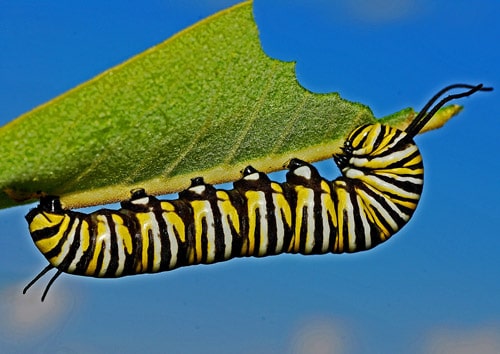
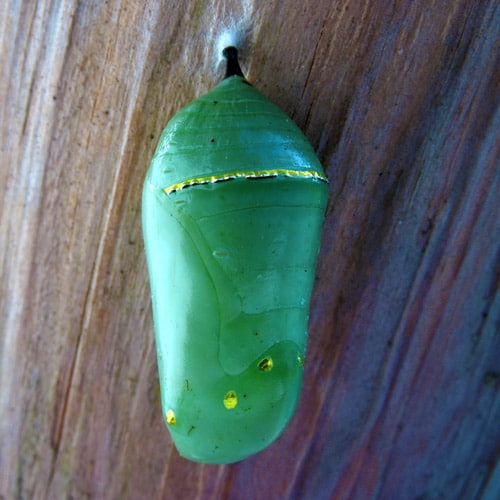
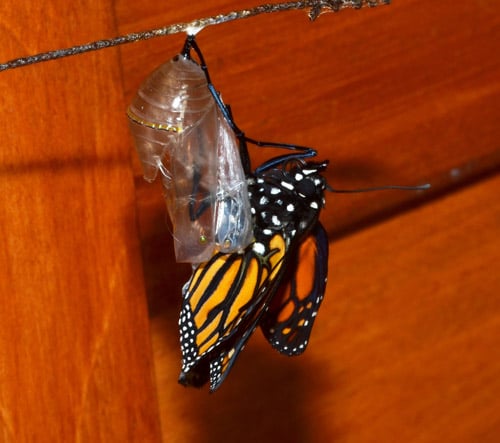
If you want any animal to visit your garden, you offer food it can eat. Adult Monarchs eat only liquids. They pollinate many kinds of wildflowers, especially big, tall ones with drops of nectar at the bottoms of narrow tubes, which depend on insects with a long narrow proboscis like the Monarch’s for pollination. In addition to milkweed blooms, Monarchs like several species of Eupatorium, ironweed, coneflowers, goldenrod, red clover, thistles, teasels, asters, alfalfa, Liatris (Blazing Stars), lilacs, candytuft, and Dame’s Rocket. Each of these flowers attracts other butterflies, birds, and insects as well. Monarchs will share nectar with other insects, and couples seem to enjoy chasing and play-fighting as courtship behavior, but apart from courtship they usually avoid sharing food with other Monarchs.
Although many wildflowers butterflies like will take over a lawn, edging out even Bermuda grass, with no effort whatsoever on your part, you may want to purchase and plant a few ornamental flowers to reassure neighbors that you are cultivating a butterfly garden rather than merely neglecting a lawn. Here are three ornamental species that aren’t likely to invade neighbors’ lawns or trigger allergies:
- Purple Coneflower, Echinacea purpureum (and other species): If you plant these well away from traffic, you can use them in herbal tea mixes that may boost immunity to colds.
- Candytuft, Iberissempervirens (and other species): These white flowers thrive in rocky or sandy soil.
- Pincushion Flower, Scabiosa atropurpurea (and other species): S. atropurpurea produces flowers in a fashion lover mix of shades from pale purplish pink to blackish red.
Where Do Monarch Butterflies Live?
Though not all Monarch Butterflies migrate, the facts of the Monarch Butterfly life cycle dictate that the butterflies move through large amounts of space during their active season. They usually avoid crowding other Monarchs. A yard or small garden that provides good Monarch Butterfly habitat might be visited by one or two adult butterflies during one or two days in each of up to four generations. The rest of the time, the butterfly garden will attract other kinds of flying flowers, including hummingbirds.
Baby butterflies are less mobile. If all goes well, each caterpillar has one milkweed plant to eat, and lives on that plant until it stops eating and looks for a place to pupate. The more native milkweed plants your butterfly garden contains, the more butterflies can grow up in it. If you look carefully at the undersides of milkweed leaves you may be able to see an egg or young caterpillar, but it�s easy to miss them if they are there. The Monarch Butterfly chrysalis is usually in an unexpected, inconspicuous place too.
All humans need to do, to encourage Monarchs to use their gardens, is to make sure they have native species of milkweed. Related plants called swallow-wortcan resemble some native milkweeds enough that female Monarchs may waste an egg on them. The caterpillars cannot survive on these plants.
How to Raise Monarch Butterflies in Cages
If you want to practice cage-rearing Monarchs indoors, the ideal way would be to construct a cage around a living milkweed plant. However, Monarch Butterfly caterpillars can survive in an aquarium or similar covered container, eating cut milkweed leaves. The container should be sterilized before the egg or caterpillar is placed inside it.
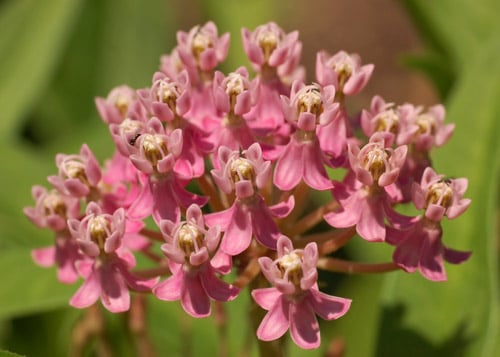
You will need to waste a lot of milkweed leaves to keep a fresh one ready for the hatchling to start eating, then make sure a fresh leaf is available to the caterpillar at all times. Wild caterpillars do not defoliate their host plants, but people rearing caterpillars indoors often do. You can conserve leaves to some extent by putting wet paper towels under them. Leaves that would heal and continue to grow on a living host plant will dry out or rot when they’ve been cut and carried into an indoor caterpillar.
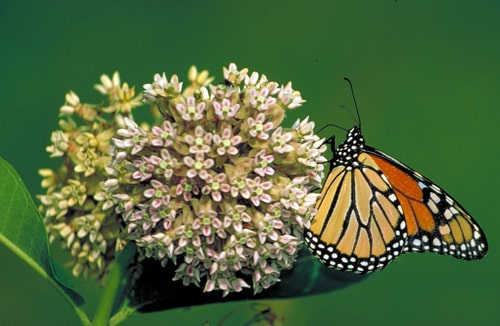
The cage for caterpillars who are fed on cut leaves needs to be all but airtight, and the bottom will need cleaning every two or three days. Caterpillars are especially vulnerable to infections when they molt (shed an outgrown skin). Monarch caterpillars are generally bland, with few ways to show illness, but they can share diseases. If you have multiple caterpillars in one cage, any individual who seems ill should be isolated.
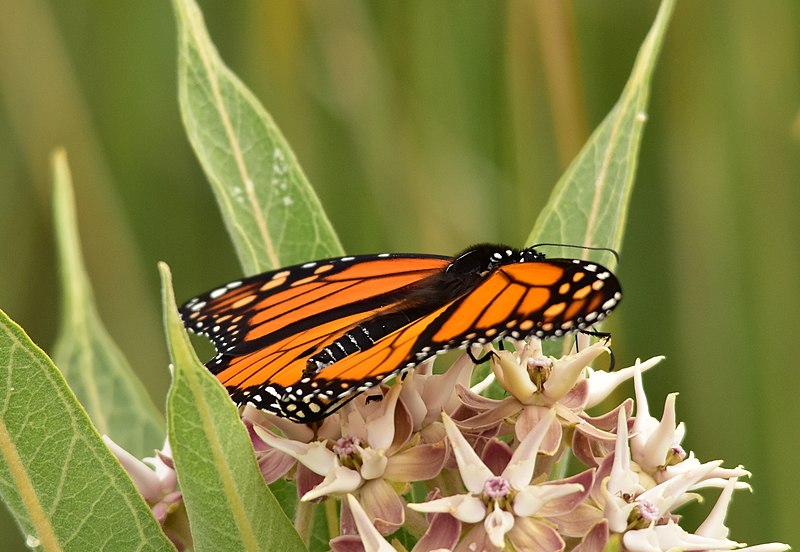
A Micrococcus (bacterial) infection sometimes causes caterpillars to perch on a branch in an inverted V position, gripping the branch by the true legs on the thoracic segments, with the head and tail ends hanging down. Unlike the position healthy Monarch Butterfly caterpillars assume for pupating, the inverted V position is the symptom of a disease that has been deliberately introduced in some places to kill Gypsy Moth caterpillars. The disease does not noticeably affect warm-blooded animals. It is highly contagious and fatal for all kinds of caterpillars. Any caterpillar that assumes the inverted V position should be destroyed at once since the function of this position appears to be to help the bacteria spread to other caterpillars.
Young adult butterflies need patience. Struggling out of the chrysalis and pumping hemolymph through their wings are necessary final steps toward growing up. Touching or helping them can hurt them. Monarch Butterfly wings are sturdier than most butterflies’ wings and take hours to dry out and harden enough for the butterflies to fly.
The usual motive for rearing Monarchs in cages is to release them as soon as they start flapping about. If it is necessary to keep them in the cage longer, they can drink from a freshly cut flower or a slice of fresh melon. Honey or sugar water used to be recommended but, these days, both are likely to contain pesticide residues.
It’s disheartening to realize that some cage-reared butterflies are reluctant to eat or imagine any butterfly being so discouraged by an indoor environment that it will sit still and let its human uncoil its proboscis with a pin. Nevertheless, that’s a trick some butterfly farmers use, and Monarchs are big enough to survive it. If a butterfly leaves its proboscis in a source of food, it is eating.
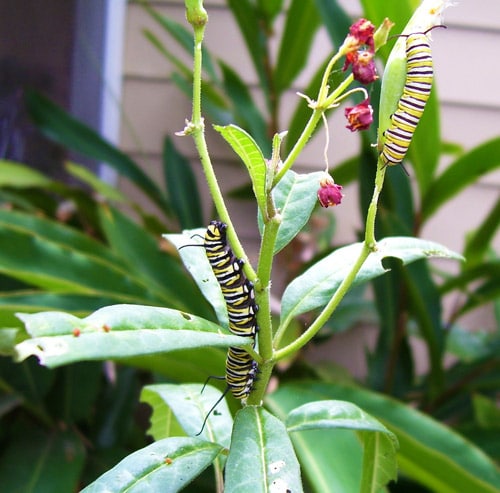

Having discovered a fondness for insects while pursuing her degree in Biology, Randi Jones was quite bugged to know that people usually dismissed these little creatures as “creepy-crawlies”.

